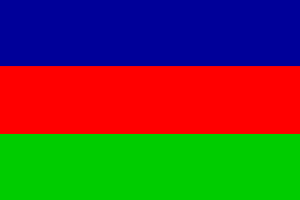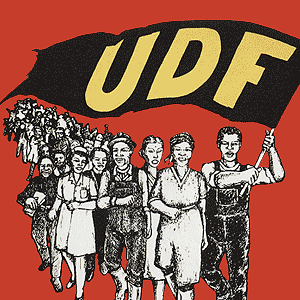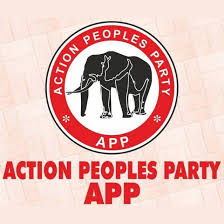Political Parties And Their Flags in Namibia
What is a Political Party?
A political party is an organization that coordinates candidates to compete in a particular country’s elections. It is common for the members of a party to hold similar ideas about politics, and parties may promote specific ideological or policy goals.
Political Parties And Their Flags in Namibia
South West Africa People’s Organisation (SWAPO)

Popular Democratic Movement (PDM)

Landless People Movement (LPM)

United Democratic Front (UDF)

All Peoples Party (APP)

Namibia Economic Freedom Fighter (NEFF)

Republican Party (RP)

Christian Democratic Movement (CDV)

Rally for Democratic and Progress (RDP)

South West Africa National Union (SWANU)

Independent Patriots for Change

National Progressive Party (NPP) Namibia

Frequently Asked Questions (FAQ’s)
Which party is the ruling party in Namibia?
The Democratic Party of Namibia is a political party in Namibia, launched in July 2008 at Keetmanshoop. Although it constitutes an initiative of the Nama people, the party plans to focus on all ethnic minorities in Namibia. It positions itself in clear opposition to SWAPO, the currently ruling party of Namibia.
Is SWAPO the ruling party in Namibia?
It has been the governing party in Namibia since the country achieved independence in 1990. As of November 2017, Namibian President Hage Geingob has been the president of SWAPO after being elected to the position at the party’s electoral congress.
Is affirmative repositioning a political party?
Affirmative Repositioning (AR) is a leftist political movement in Namibia mainly focused on land reform, youth empowerment and social reform.
Who is in charge of the executive branch in Namibia?
The President is the Head of State, which means that he or she is in charge of the executive branch. The President is also the Commander-in-Chief of the Namibian Defence Force. Any man or woman who is at least 35 years old and who was born in Namibia or has a Namibian parent can stand for election as President.
How many ministries do we have in Namibia?
As of 2020 there are 23 Ministries in Namibia: Ministry of Agriculture, Water and Forestry (MAWF)
How many ministers do we have in Namibia?
How many ministers does Namibia have? Namibia has 23 Ministries.
How many members are there in Namibia’s National Assembly?
Since 2014, it has a total of 104 members. 96 members are directly elected through a system of closed list proportional representation and serve five-year terms. Eight additional members are appointed by the President.
What are the three branches of Namibian government?
The Namibian Constitution creates three different branches of government: 1) the executive branch (the President and Cabinet) 2) the legislative branch (Parliament) 3) the judicial branch (the courts). This kind of separation of powers is an important part of most democracies.
What is the role of each branch of the government?
The Constitution created the 3 branches of government: The Legislative Branch to make the laws. … The Executive Branch to enforce the laws. The Judicial Branch to interpret the laws.
What is the culture of Namibia?
Culture in Namibia is a blend of many different people and its culture and customs have absorbed both African and European elements and fused them into a blend of the two. Although the country is urbanising rapidly, a majority of Namibians still live in rural areas and lead largely impoverished lives.
What is called ruling party?
The ruling party or governing party in a democratic parliamentary system is the political party or coalition holding a majority of elected positions in a parliament, that administers the affairs of state.
What is called constituency?
A constituent is a voting member of a community or organization and has the power to appoint or elect. A constituency is all of the constituents of a representative. Constituencies for local government elections are called either Wards or electoral divisions.
Is Namibia a socialist country?
Namibia Is A Socialist State – The Namibian.
Was Namibia a British colony?
Discover Namibia’s past before visiting this African country
Early in the 20th Century Namibia was a German Colony. After the 1st World War it became a League of Nations administered territory. Following the 2nd World War, South Africa administered Namibia, until independence in 1990.
What is mean by regional political party?
A “regional party” is any political party with its base in a single region, whatever its objectives and platform may be, whereas “regionalist” parties are a subset of regional parties that specifically campaign for greater autonomy or independence in their region.